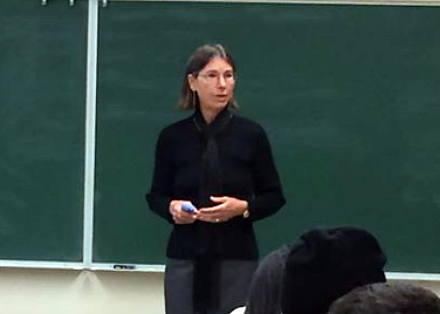Here is what I am reading today:
““We think that reducing the flow of information between these two brain structures that play a central role in processing auditory information sets the stage for stress or other factors to come along and trigger the ‘voices’ that are the most common psychotic symptom of schizophrenia,” said the study’s corresponding author Stanislav Zakharenko, M.D., Ph.D., an associate member of the St. Jude Department of Developmental Neurobiology. “These findings also integrate several competing models regarding changes in the brain that lead to this complex disorder.””
““We’ve known for a long time that sleep plays an important role in learning and memory. If you don’t sleep well you won’t learn well,” says senior investigator Wen-Biao Gan, PhD, professor of neuroscience and physiology and a member of the Skirball Institute of Biomolecular Medicine at NYU Langone Medical Center. “But what’s the underlying physical mechanism responsible for this phenomenon? Here we’ve shown how sleep helps neurons form very specific connections on dendritic branches that may facilitate long-term memory. We also show how different types of learning form synapses on different branches of the same neurons, suggesting that learning causes very specific structural changes in the brain.””
check out the cover photo “An artistic rendition of a glomerulus in the mammalian olfactory bulb, with affiliated excitatory mitral cells (dark green) and external tufted (ET) cells (white) and inhibitory periglomerular (PG) cells (brown, pink, orange). Local dendrodendritic processing involving ET and PG cells appears to control whether the mitral cell output of a glomerulus is entirely ‘on’ or ‘off.’ Artwork by Greg Dunn, Neuroscience Graduate Program, University of Pennsylvania. For more information, see the article by Gire and Schoppa in this issue (pages 13454–13464).”
“…In humans, there are three common variants, or alleles, of the APOE gene, numbered 2, 3 and 4. The obvious step, Roses realized, was to find out whether individual APOE alleles influence the risk of developing Alzheimer’s disease. The variants can be distinguished from one another using a technique called the polymerase chain reaction (PCR). But Roses had little experience with PCR, so he asked the postdocs in his team to test samples from people with the disease and healthy controls. The postdocs refused: they were busy hunting for genes underlying Alzheimer’s, and APOE seemed an unlikely candidate. The feeling in the lab, recalls Roses, was that “the chief was off on one of his crazy ideas”.”
““We know that some chemotherapeutic agents can kill brain tumor cells when they are outside the brain (as in a laboratory test). But because the agents cannot cross the blood-brain barrier, they are not able to kill brain tumor cells inside the brain. With the peptide carrier, these agents can now get into the brain and potentially kill the tumor cells,” says Mayo neurology researcher Robert Jenkins, M.D., Ph.D., senior author of the study.”
“The quick diagnosis and successful treatment of the adolescent just 48 hours after cerebrospinal spinal fluid and blood were received for analysis portends the broader application of powerful, “next-generation sequencing” (NGS) techniques in solving infectious disease mysteries, not only in cutting-edge research labs, but also in clinical laboratories accessible to hospital physicians everywhere, according to Charles Chiu, MD, PhD, a professor of laboratory medicine at UC San Francisco. Chiu is senior author of the case study, published online in the The New England Journal of Medicine (NEJM) on June 4, 2014.”
“Lead author Dr Allan Pacey, Senior Lecturer in Andrology at the University of Sheffield, said: “Our knowledge of factors that influence sperm size and shape is very limited, yet faced with a diagnosis of poor sperm morphology, many men are concerned to try and identify any factors in their lifestyle that could be causing this. It is therefore reassuring to find that there are very few identifiable risks, although our data suggests that cannabis users might be advised to stop using the drug if they are planning to try and start a family.””
“For generations, psychology students have been asking the question, “Whatever happened to Little Albert?”, the baby who John B Watson and Rosalie Rayner conditioned to fear furry things back in 1919. Five years ago, it seemed that the question had finally been answered when Hall Beck of Appalachian State University in North Carolina and his colleagues published the results of some intensive archive-snooping. They declared that “Albert B.” (as the baby was called in the original report) had actually been Douglas Merritte, a child who died of hydrocephaly just a few years after the experiment. Now, however, two psychologists in Alberta are disputing that claim, and The Chronicle of Higher Education has just published an article on the matter.”



0 Comments